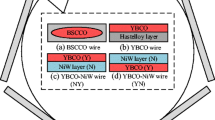Abstract
Holistic tin-plating on the outer conductor is one of the key processes in the manufacture of semi-flexible coaxial cable, which is widely applied to the third generation (3G) mobile communication system. However, in the traditional horizontal tin-plating process, disadvantages such as the pinhole defects and low productivity effect cannot be avoided. In this paper, a vertical tin-plating process was proposed to reduce the pinhole defects and improve the tin-coating quality. Compared with the traditional horizontal tin-plating process, the immersion length was reduced from 300–400 mm to 10–100 mm and the tin-plating time was reduced from 7 s to 3 s in the proposed method. The experimental results indicate that immersion length and time are key parameters for the tin-plating quality. With this new tin-plating process, the experimental results show that the pinhole defects can be eliminated effectively by controlling the immersion depth below 100 mm and tin-plating time at 3 s. The thickness of tin-coating increased from not more than 5 μm to 12.3 μm with the proposed vertical tin-plating process. Meanwhile, the thickness of the intermetallic compounds (IMCs) layer between the tin-coating and copper wires was reduced from 3.26 μm to 0.62 μm if the immersion time decreased from 30 s to 1 s. Besides, a self-developed flux, which possesses a boiling point or decomposed temperature of active components over 300 °C, exhibits a better efficiency in reducing the pinhole formation.
Similar content being viewed by others
References
Fan Qiang. Process of overall tin-plating on semi-flexible coaxial cable[J]. Optical Fiber and Electric Cable and Their Applications, 2010(2): 5–28 (in Chinese).
Zhong Xiuqing. A new coaxial cable-The SFX type semiflexible coaxial cable with tin dipped braid[J]. Optical Fiber and Electric Cable and Their Applications, 1999(4):6 (in Chinese).
Cheng Fangjie. Vertical Tin-Plating Device for Forming Tin-plated Shielding Layer on Semi-flexible Coaxial Cable: China, CN101603166A[P]. 2009-12-16(in Chinese).
Park M S, Arróyave R. Computational investigation of intermetallic compounds (Cu6Sn5 and Cu3Sn) growth during solid-state aging process[J]. Computational Materials Science, 2011, 50(5): 1692–1700.
Yang Ming, Li Mingyu, Wang Ling et al. Growth behavior of Cu6Sn5 grains formed at an Sn3.5Ag/Cu interface[J]. Materials Letters, 2011, 65(10): 1506–1509.
Zhao N, Ma H T, Wang L. Microstructure, mechanical property and interfacial reaction of Sn-Cu based multicomponent lead-free solders[J]. Rare Metal Materials and Engineering, 2009, 38(S1): 107–111(in Chinese).
Chan Y C, So A C K, Lai J K L. Growth kinetic studies of Cu-Sn intermetallic compound and its effect on shear strength of LCCC SMT solder joints[J]. Materials Science and Engineering: B, 1998, 55(1/2): 5–13.
Yu D Q, Wu C M L, Law C M T, et al. Intermetallic compounds growth between Sn-3.5Ag lead-free solder and Cu substrate by dipping method[J]. Journal of Alloys and Compounds, 2005, 392(1/2): 192–199.
Yoon J W, Lee Y H, Kim D G, et al. Intermetallic compound layer growth at the interface between Sn-Cu-Ni solder and Cu substrate[J]. Journal of Alloys and Compounds, 2004, 381(1/2): 151–157.
Shin C K, Baik Y J, Huh J Y. Effects of microstructural evolution and intermetallic layer growth on shear strength of ball-grid-array Sn-Cu solder joints[J]. Journal of Electronic Materials, 2001, 30(10): 1323–1331.
Petr Harcuba, Miloš Janeček. Microstructure changes and physical properties of the intermetallic compounds formed at the interface between Sn-Cu solders and a Cu substrate due to a minor addition of Ni[J]. Journal of Electronic Materials, 2010, 39(12): 2553–2557.
Park M S, Arroyave R. Formation and growth of intermetallic compound Cu6Sn5 at early stages in lead-free soldering[ J]. Journal of Electronic Materials, 2010, 39(12): 2574–2582.
Yoon J W, Jung S B. Interfacial reactions between Sn-0.4Cu solder and Cu substrate with or without ENIG plating layer during reflow reaction[J]. Journal of Alloys and Compounds, 2005, 396(1/2): 122–127.
Li G Y, Chen B L. Formation and growth kinetics of interfacial intermetallics in Pb-free solder joint[J]. IEEE Transactions on Components and Packaging Technologies, 2003, 26(3): 651–658.
Jiang L, Chawla N. Mechanical properties of Cu6Sn5 intermetallic by micropillar compression testing[J]. Scripta Materialia, 2010, 63(5): 480–483.
Author information
Authors and Affiliations
Corresponding author
Additional information
Supported by Science and Technology Support Project of Tianjin Science and Technology Commission (No. 10ZCKFGX3500).
CHENG Fangjie, born in 1971, male, Dr, associate Prof.
Rights and permissions
About this article
Cite this article
Cheng, F., Xiao, X., Sun, G. et al. Control of pinhole defects formation in semi-flexible coaxial cable by vertical tin-plating process. Trans. Tianjin Univ. 17, 320–323 (2011). https://doi.org/10.1007/s12209-011-1603-7
Accepted:
Published:
Issue Date:
DOI: https://doi.org/10.1007/s12209-011-1603-7




